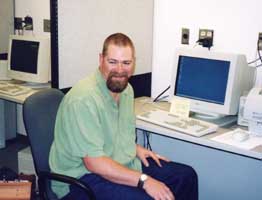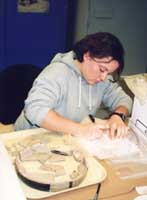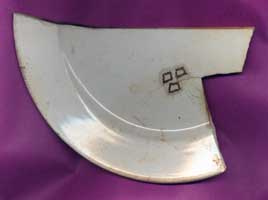This week is the beginning of Winter Quarter at Stanford, and we held our first two course meetings. The students in this class are quite enthusiastic about the opportunity to work with this collection, and bring a diverse array of experience and interests to this project. We began with a brief introduction to the history of the Market Street Chinatown collection, including an overview of the history of Chinese settlements in San Jose and of the excavations that produced this collection. At our second course meeting we were joined by Rebecca Allen of Past Forward, Inc. Dr. Allen is one of the archaeologists responsible for the Woolen Mills Chinatown excavations in San Jose. She gave a presentation to our class about this excavation, and discussed the archaeology of Chinese settlement sites in California more generally, helping us to have a picture of how our work in this class can contribute to better understanding of this important part of the history of California.
On our first day in the laboratory, we held orientation sessions in order to familiarize students with the lab. Scott Baxter of Past Forward, Inc. led an important part of this orientation, showing students how to use the database that he has developed for us. The database we are using is designed in order to allow comparison of the Woolen Mills and Market Street Chinatown collections, and also to be a useful tool for facilitating future research utilizing the collection. Our orientation continued with an introduction to the routine tasks that are essential to cataloging this collection, such as how to handle artifacts safely in the lab, how to wash artifacts, how to use basic lab equipment such as the microscope or balances for weighing, how to use archaeological conventions for labeling artifacts, and how to use reference material for identifying and studying artifacts. We were able to check a box of artifacts out to each student to begin cataloging. As we began to take the lids off of boxes and get to the work of cataloging, it is safe to say that all of the students were excited by the artifacts that they found in their boxes. This is a really great collection! One of the first artifacts unpacked today is this week’s Artifact of the Week.
Artifact of the Week
This artifact has a lot to say in itself about life in Market Street Chinatown. This artifact is an eight and a half inch plate made of white improved earthenware, manufactured at Stoke-upon-Trent in Great Britain, a major center of ceramic production in the nineteenth and twentieth centuries. This plate was probably manufactured by Close & Co. This information was gained by looking at the manufacturer’s mark that was partly preserved on the base of this plate. The other side of the plate has another story to tell. If you look at the picture of the plate, you will see three near-rectangles that have been pecked through the glaze. Many residents of the Market Street Chinatown took their meals in communal kitchens, and marked their plates and bowls with symbols indicating personal ownership. Is this a symbol that anyone recognizes?



The website looks great and I wish I was registered in the class! A wonderful beginning!
I look forward to hearing and seeing more as you “dig” into the boxes.